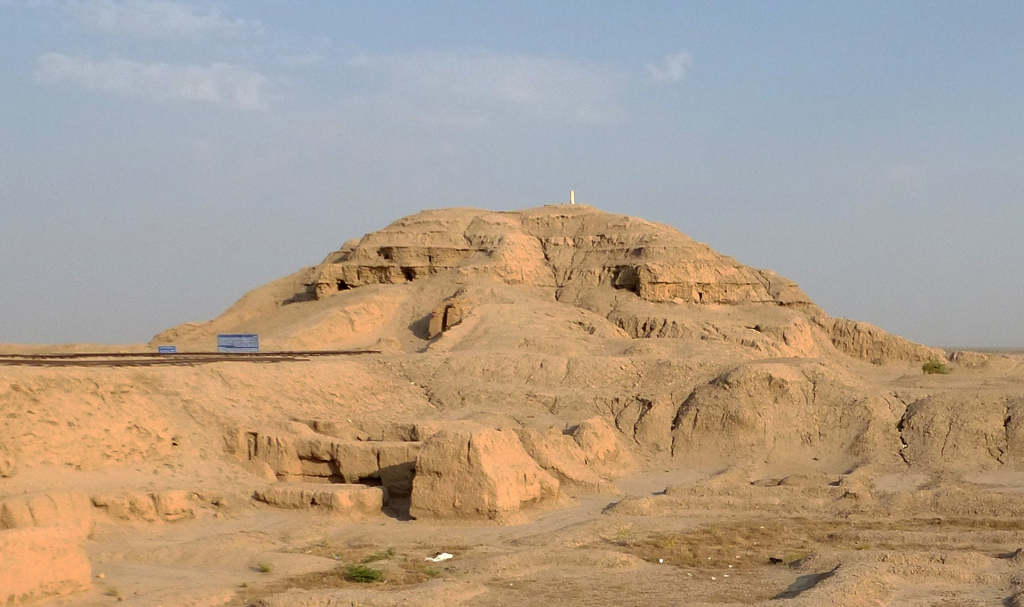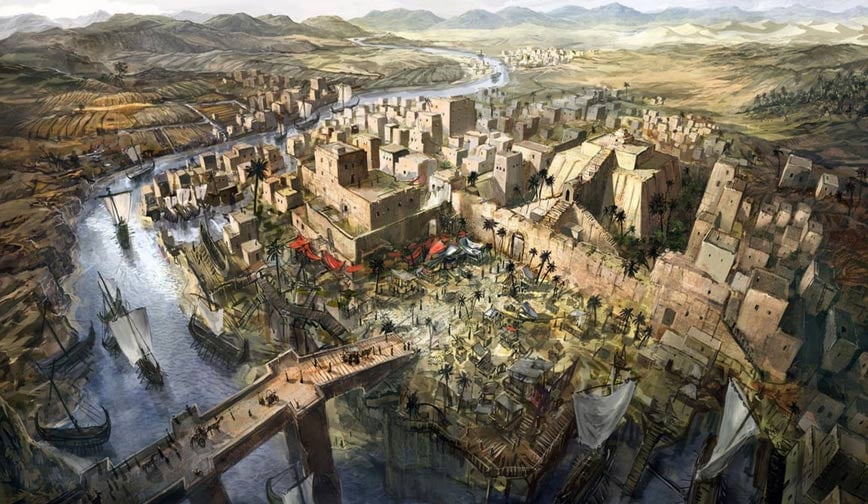In the heart of the ancient Near East, lies a city that once stood as a testament to human achievement and urbanization – Uruk, now known as Warka. Situated east of the dry bed of the Euphrates River, Uruk’s historical significance reverberates through time. This article delves into the captivating history of this remarkable city, from its emergence as a center of power to its eventual decline and abandonment.
Uruk’s Magnificence
Uruk, also referred to as Warka in modern times, was strategically positioned 58 miles northwest of ancient Ur, 108 kilometers southeast of ancient Nippur, and 24 kilometers southeast of ancient Larsa. Its location, now 30 km (19 mi) east of modern-day Samawah in Al-Muthannā, Iraq, was crucial to its rise as a hub of early urbanization and civilization.
The Flourishing Uruk Period
Uruk’s prominence is marked by the Uruk period, a milestone in the region’s history. As early as the mid-4th millennium BC, Uruk played a central role in the urbanization of Sumer. By around 3100 BC, during the final phase of the Uruk period, the city boasted approximately 40,000 residents, with an additional 80,000 to 90,000 individuals residing in its vicinity. This population surge established Uruk as the world’s largest urban area during its time.
Legendary Figures and Events
In the rich tapestry of Uruk’s history, the legendary king Gilgamesh takes center stage. The Sumerian King List places him as a ruler in the 27th century BC, adding a touch of myth and majesty to Uruk’s legacy. Meanwhile, tales like the Epic of Gilgamesh and Enmerkar and the Lord of Aratta immortalize the city’s grandeur.
Phases of Growth and Cultural Significance
Uruk underwent several growth phases, starting from the Early Uruk period (4000–3500 BC) and extending into the Late Uruk period (3500–3100 BC). The amalgamation of two smaller Ubaid settlements paved the way for the establishment of the Eanna District and the Anu District, dedicated to Inanna and Anu, respectively. These districts housed temple complexes and embodied the city’s cultural and spiritual essence. Uruk’s architecture showcased a blend of typical courtyard houses and innovative canal systems, often likened to “Venice in the desert”.
Shifts in Geography and Archaeological Discoveries
Uruk’s physical position evolved over time. Originally situated southwest of the ancient Euphrates River, the city experienced a change in its location due to shifts in the river’s course and irrigation-related salination. These factors are believed to have contributed to the city’s eventual decline.

Archaeological excavations have unveiled layers of Uruk’s history. Successive cities were built atop one another, each representing a distinct period of growth. From Uruk XVIII, the founding period, to Uruk I, these layers tell the story of Uruk’s evolution through time.
Uruk’s Political Influence and Dynasties
Uruk’s significance was not confined to its physical layout; it also played a crucial role in the political landscape of Sumer. Over the years, Uruk’s influence expanded, encompassing nearby settlements and stretching beyond Sumer into upper Mesopotamia and Syria. Mythological and historical figures alike graced Uruk’s halls of power, with the control shifting from temples to palaces. Dynasties rose and fell, shaping Uruk’s destiny.
Excavations and Rediscoveries

The site of Uruk, with its sprawling 5.5 km² area, has captured the attention of archaeologists for centuries. The German Oriental Society, under Julius Jordan, uncovered the awe-inspiring temple of Ishtar and unearthed the city wall. Remarkable for its construction with colorful mosaics, the temples at Uruk stood as testament to the city’s grandeur. Archaeological endeavors have spanned decades, with each excavation unearthing new layers of Uruk’s history .



